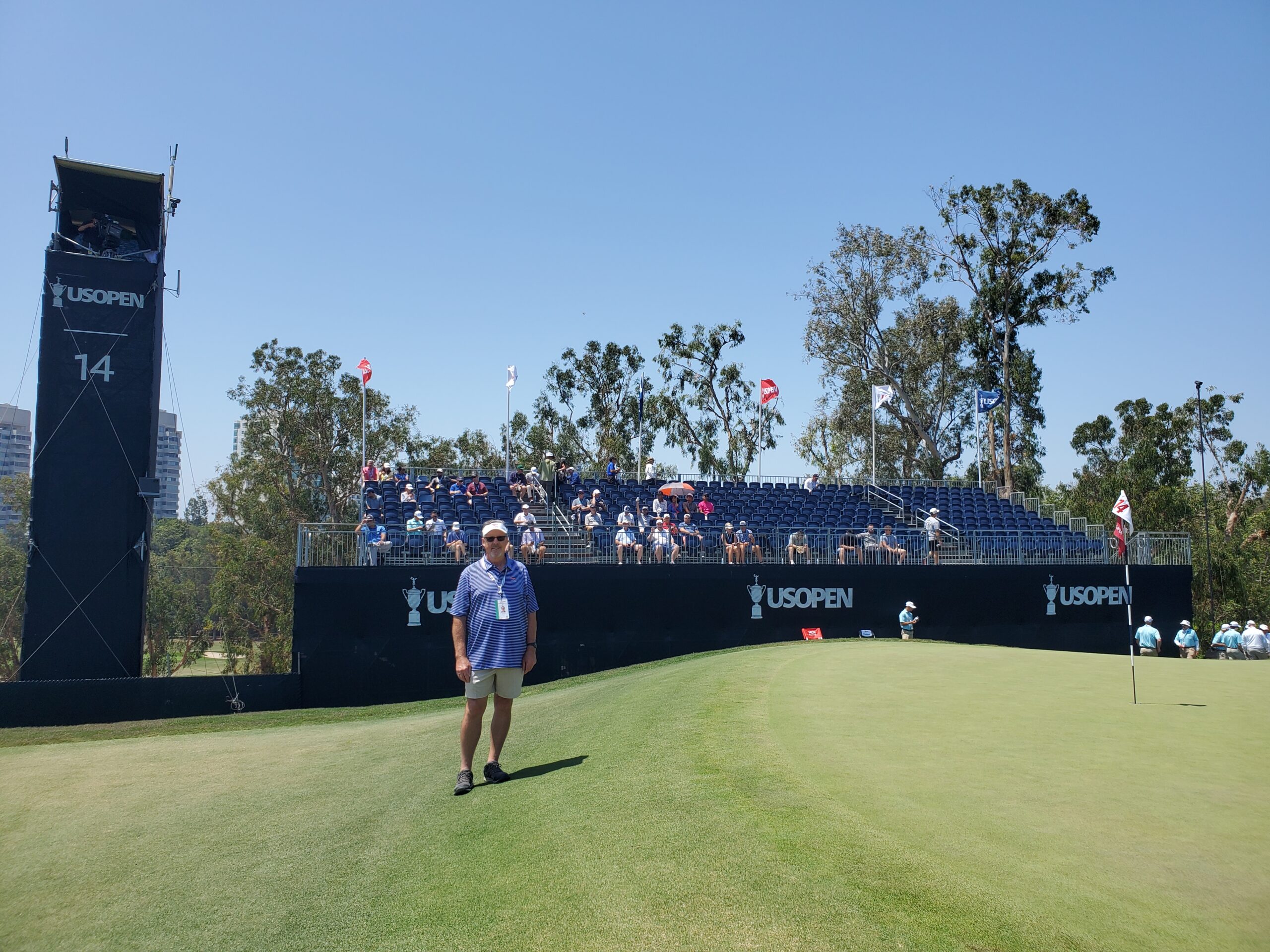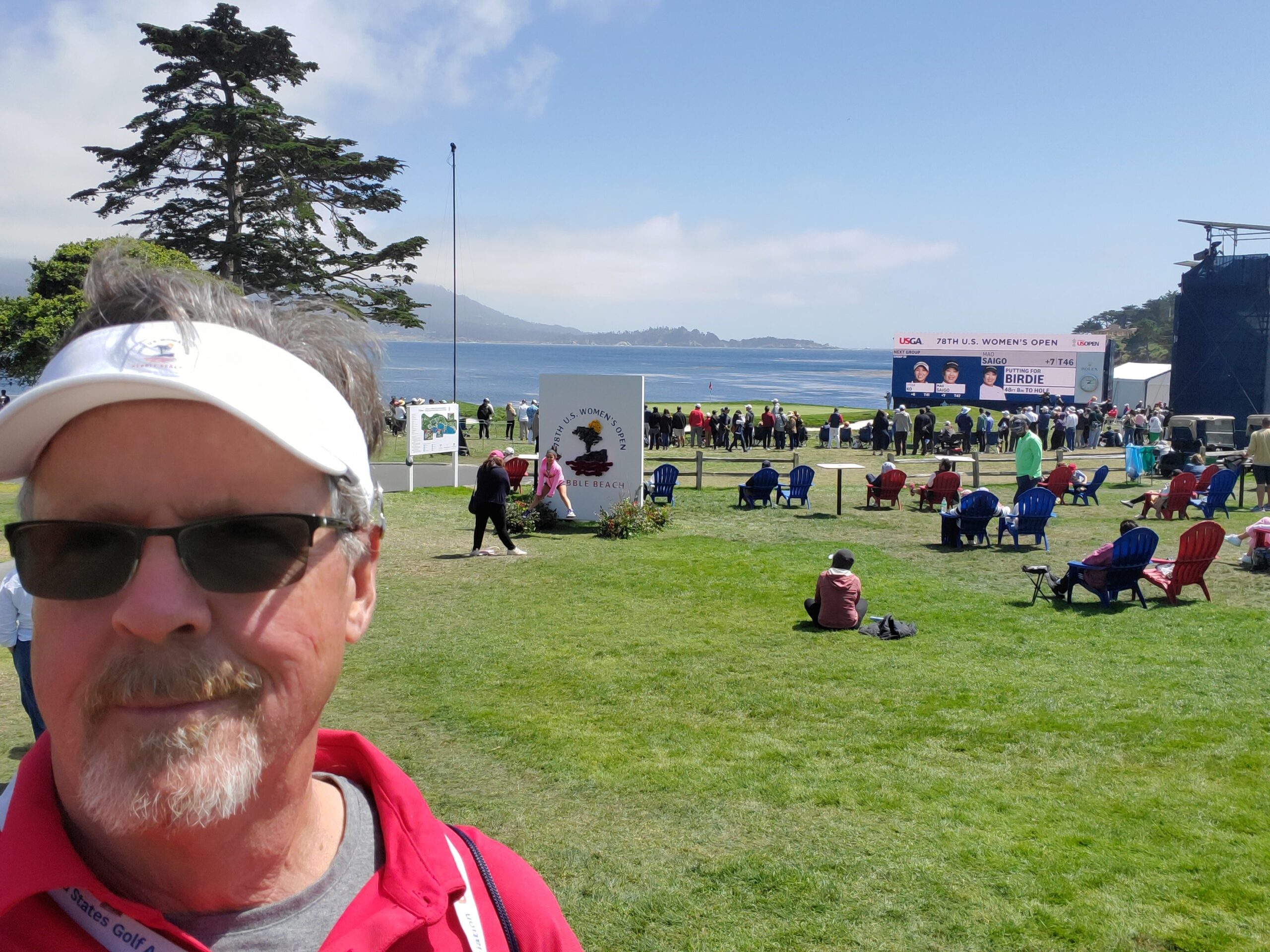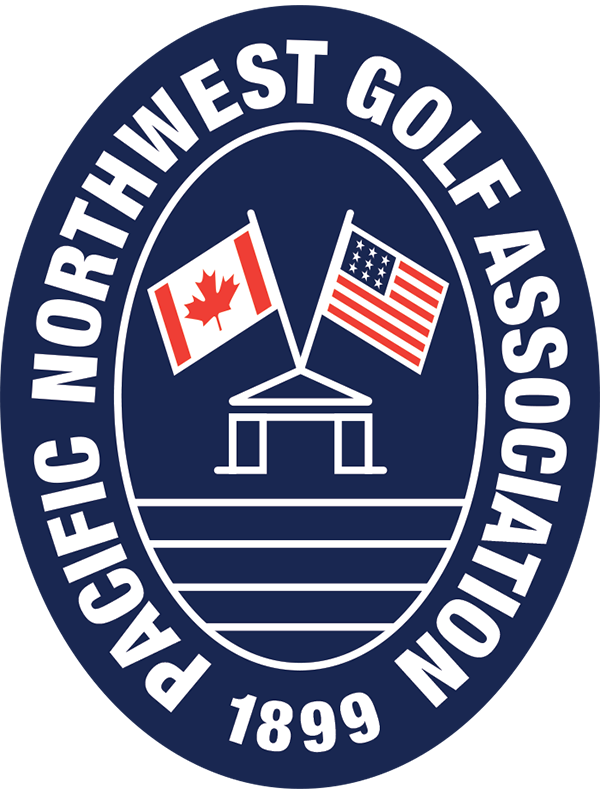Volunteering at Golf’s Biggest Stages

The majors want you, and one local has answered – again and again and again
by Jim Sutherland
Remember the final round at last year’s U.S. Open at Los Angeles Country Club, when Rory McIlroy’s ball landed in the horrible scruff beside 14, but seemingly luckily for him, turned out to be embedded? Who could forget that?
Definitely not Kerry Isbister. He’s the guy you saw on TV, before Rory or the Rules officials, or even the spotters, showed up. He discovered the ball buried in the hay, although Scottie Scheffler later seemed to get the credit.
Soon there was a huddle of officials hovering over Rory’s duly identified ball, eventually determining that he should get free relief.
But Rory, you’ll remember, couldn’t take advantage and carded a disastrous bogey, ultimately finishing exactly one stroke behind winner Wyndham Clark. Meantime, Isbister had wrapped up for another year, and was soon headed back to Vancouver, B.C. and his normal life as just another golf nut belonging to men’s clubs at the University and McCleery courses.
At many of the past decade’s majors, however, as well as lots of LPGA events, Isbister has been much more than a mere golf nut. Instead, he’s been, at various times, a marshall, a walking scorer and a ball position operator, entering data for the PGA TOUR’s ShotLink System.
It all started at Chambers Bay and the 2015 U.S. Open. Isbister, an electrical engineer who’s now 67 and retired, is a dual Canada/U.S. citizen and was working out of Seattle at the time. He’d already done some paid work on the communications system there when he discovered that he could volunteer with the USGA to stand behind the ropes operating a ShotLink laser.
He enjoyed that so much, he volunteered again in 2017 for the U.S. Open at Erin Hills in Wisconsin, followed in 2018 and 2019 by Shinnecock Hills and Pebble Beach, plus, of course the 2023 edition in Los Angeles. (During the height of Covid, volunteers were restricted to in-state volunteers, thus the gap.)
 Isbister’s ball position role is one of the more plum volunteer assignments, as it involves judgment and decision-making, as well as lots of freedom to roam behind the ropes.
Isbister’s ball position role is one of the more plum volunteer assignments, as it involves judgment and decision-making, as well as lots of freedom to roam behind the ropes.
“When we track the ball and mark it, we have to say whether it’s first cut, second cut, water, bunker, all that,” he explains. “In general, the camera gets anything on the green, but if it’s not on the green, we have to walk over for a look.”
In addition to the U.S. Opens, Isbister has volunteered at five LPGA events, three of them majors, played at Pine Needles (North Carolina), Congressional (near Washington, DC) and Pebble Beach.
The LPGA doesn’t use ShotLink, so Isbister takes on different roles at their tournaments, most recently working as a walking scorer at the CPKC Canadian Open, right at home at Shaughnessy in Vancouver. “I kind of like that better,” he says, sounding surprised. “You get to meet the players. You walk the course.”
On average, Isbister thinks each tournament has cost him about $3,000, taking into account airfare, car rental, accommodation and meals. He books his stays as soon as he knows what his schedule will be, always months in advance, but he’s had hotels and AirBnBs cancel on him, ostensibly for valid reasons but almost certainly, he thinks, because they belatedly realized they could charge a lot more. “The trick is you always book two hotels,” he says.
It’s a problem that’s especially likely to crop up when a major lands in a smaller city. “The circus comes to town,” Isbister says. “There’s 4,500 volunteers, and 50,000-60,000 spectators a day,” plus, of course, all the players, caddies, officials, commercial connections and media.
Looking ahead, he thinks he’ll restrict himself to West Coast events that he can drive to, saving both money and hassle.
Still, he has no regrets about the miles he’s covered, and the times he’s had. Plus, there’s the swag. “You pay $265 for the privilege of volunteering. But you get two shirts, a water bottle, a visor.”
The next time you’re playing at University or McCleery, just look for the guy with the Pinehurst or Shinnecock gear.
Get inside the ropes! There are numerous opportunities to get involved, volunteering at several levels throughout the region.
Jim Sutherland is a former editor of Vancouver and Western Living magazines in British Columbia who amuses himself by writing humorous novels with a golf connection, including Snap Slice (2013) and Good Grief (2020), both set in the Pacific Northwest and available on Amazon.






